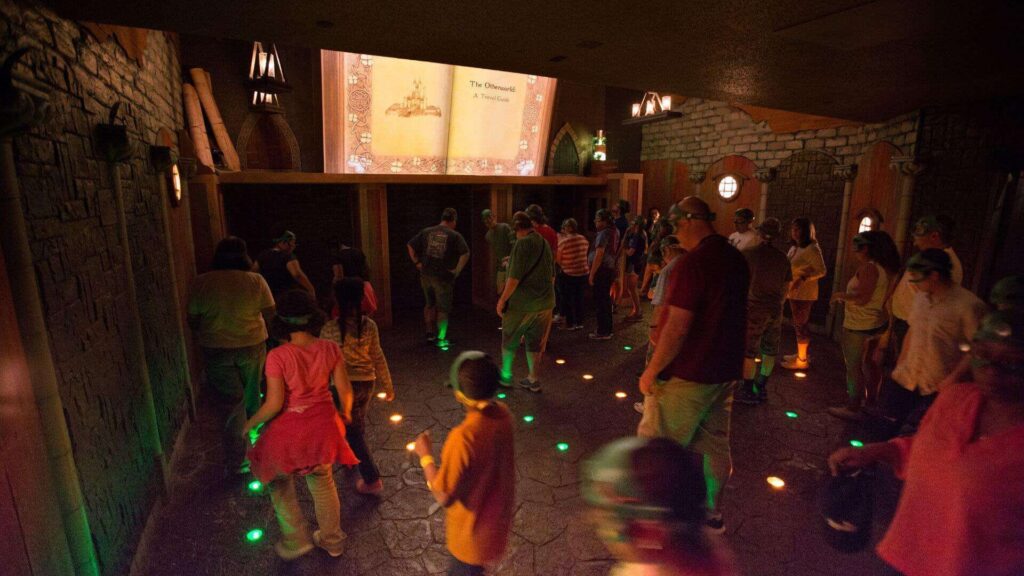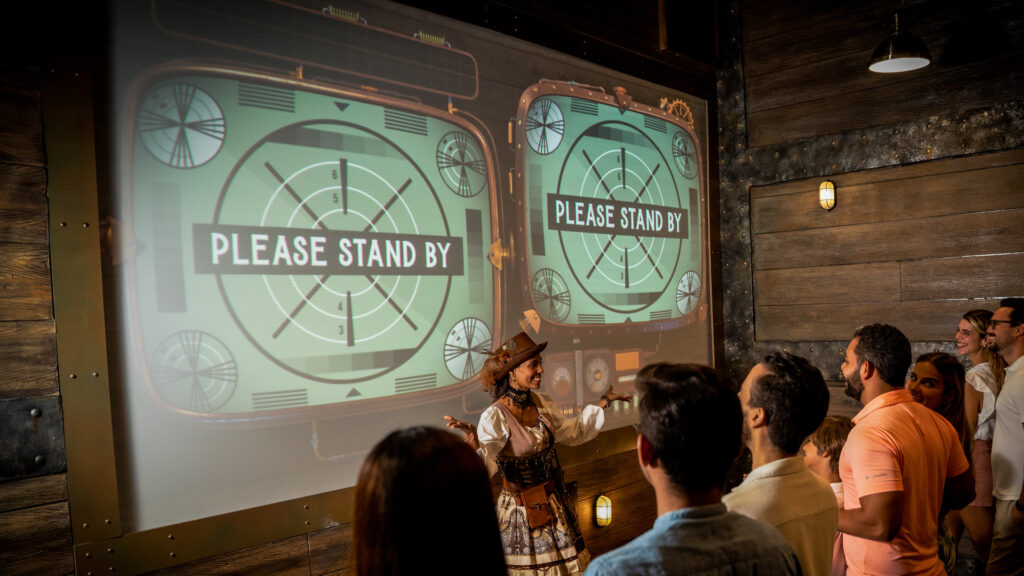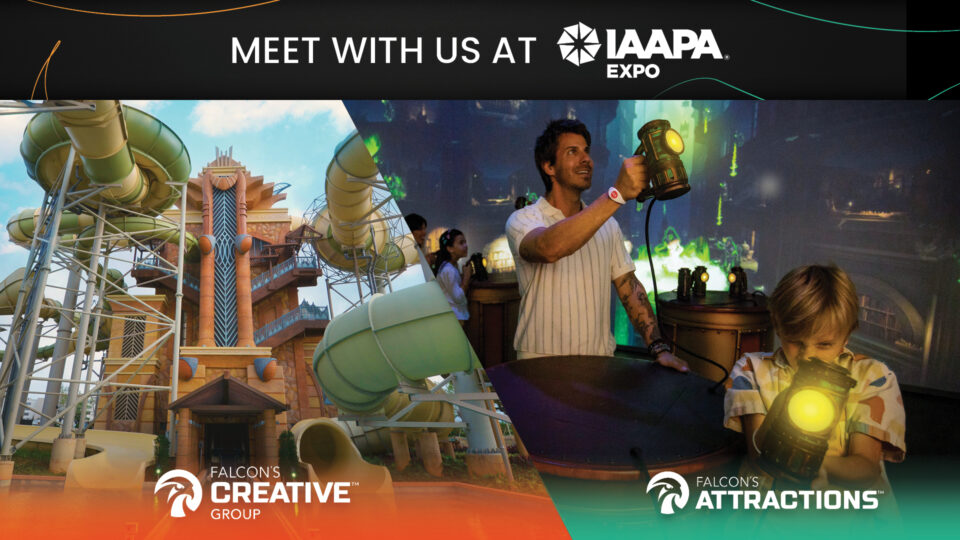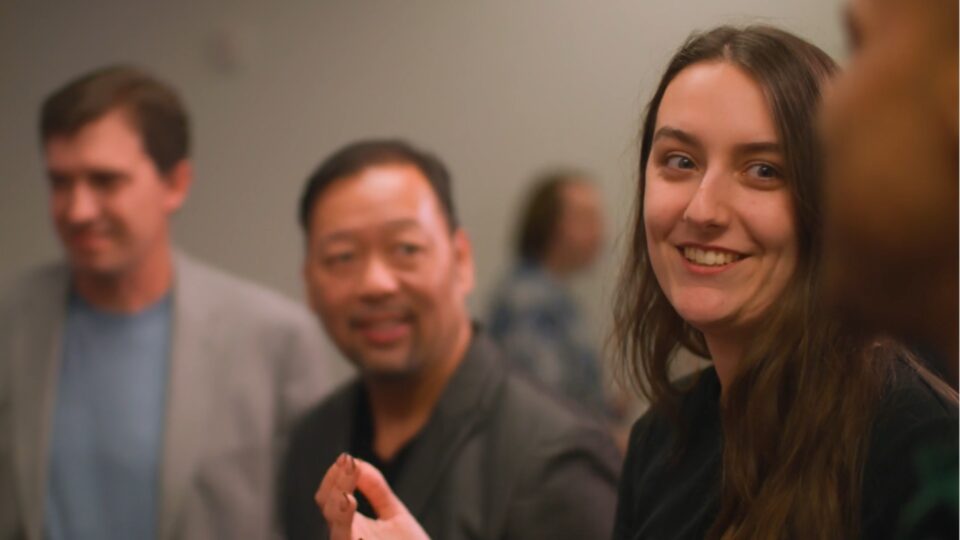No one loves to wait in line at a theme park, but a well-designed queue can transform that wait into a cohesive and immersive part of the experience. In this episode of Experience Imagination, host Audrey DeLong sat down with design experts Jen Prichard and Eric Loperena, and project planning manager Emily Sodnicar from Falcon’s to explore how creative storytelling, psychology, data, and innovation are shaping the future of queue design.
Turning Waiting into Storytelling with Good Design
Eric Loperena
Design Director
Jen Prichard
Technical Director
Why Queues Matter More Than Ever
“People are a lot more impatient when they’ve got entertainment that sits in their pocket, and you can access that entertainment at any point in time. People don’t want to focus on their surroundings if it’s not engaging,” said Jen. “Every time a guest pulls out their phone, they’re taken out of the experience. The goal is to keep them in the story, fully immersed, so when they reach the ride, they’re in the right mindset.”
Over the years, queues have shifted from being overlooked holding spaces to an integrated experiences. As Eric put it, “A lot of the attractions from yesteryear were based on either an IP within the park or just the ride. Now attractions are more story-driven and focus on IP’s that are already popular through the film industry. People know the story, and they come in expecting to see that story. And it becomes more complicated to produce the queue when you’re measuring up to big budget films and people’s high expectations.”Shape
Favorite Queues of All Time
Both designers shared the queues that inspire them most:
“It’s overwhelming how detailed it is, and when you’re a fan of Harry Potter, walking through the Hogwarts Castle, it’s unlike anything you’ve ever seen. And it’s everything that you’ve ever dreamt it would be. I just don’t get tired walking through it every time.”
- Eric: Avatar Flight of Passage
“It’s an incredible queue. It mixes a little bit of outdoor and indoor. Going through the bioluminescent forests of Pandora, you’ve got the rocks overhead. And then when you get into the testing labs and stuff and see a Na’vi in the tank, I mean, it’s a life-size to scale thing, and the little details within the queue as well within the lab test, it’s just so immersive. It really sets up the story for what you’re going to do on the adventure.”
The Psychology of Waiting
Psychology plays a huge role in how guests perceive time spent in line as well as their overall thoughts of the attraction as a whole.
“There’s an old adage,” Eric shared. “‘Unoccupied time feels longer than occupied time.’ If guests feel like they’re just standing there waiting, the frustration builds. Queue design is kind of a master class in psychology when you think about it. You’re taking somebody who could be like, ‘I’m waiting forever for this ride,’ and you’re preoccupying their time and distracting them with something else.”
Eric added:
It’s also setting up the narrative for what’s happening in the attraction. The queue is definitely part of the attraction nowadays; it’s not a waiting game anymore.”
“Guests want to get to the experience, and then they want to move on to the next experience,” said Jen, “One of the big key things about queues is that you don’t want to make guests regret the wait time. They will consider the weight of the queue compared to how the main show made them feel and what they got out of it. Was that 2-hour queue worth that ride? And so that’s why it’s really important to make the queues engaging and make it worth their while.”
If you want to learn more about the psychology of attractions, we’ve got a full podcast episode on this topic. Listen here.
Cue it Up: The Role of Storytelling
The strongest queues act as the first chapter of the story.
“The queue is the intro to the experience,” explains Jen, “You know, that’s where you’re doing your world-building. That’s where you’re setting up the environment that the guests are in, you’re developing the story that is taking place in the attraction. You’re setting up the reason for guests being there. Storytelling is huge in queues.”ShapeShape
What Not to Do in Queue Design
Of course, not all queues hit the mark. Jen and Eric shared a few things to avoid when designing attraction queues:
- Avoid long, straight lines – they feel monotonous.
- Keep props out of reach – Things within reach will get damaged and might even end up with some guest initials on it.
- Be careful with sound – No one wants to stand next to a blaring interactive for 30 minutes.
- Plan for repeat exposure – For example, if your queue video loops every three minutes, guests may hear it 15 times. Design for variety so it stays fresh.
Advice for Aspiring Queue Designers
To wrap up the design segment, both experts offered advice for the next generation of theme park designers.
“Push boundaries. Don’t be afraid to take risks,” encouraged Eric. “That is how some of the greatest designs come to fruition.”
Jen added:
“Design for both the superfans and the newcomers. Hide Easter eggs for the diehards, but make sure someone experiencing the IP for the first time still feels immersed and included.”
The Math and Magic of Queue Design
Emily Sodnicar
Project Planning Manager II
The Role of a Project Planning Manager
“My job falls at the intersection between the creative teams, the architects, the master planners, the operations,” Emily explained. “I focus a lot on the data and the metrics behind our designs.”
In terms of queues, that includes calculating:
- How long a queue needs to be.
- How many guests it needs to hold.
- “Special requirements” like lockers, premium passes, or child swap areas.
The Steps of Planning a Queue
Emily outlined the typical process:
- Start with the attraction type – Is it a roller coaster, a dark ride, indoors, outdoors?
- Layer in the story – What do guests need to learn before boarding? Do we need scenes, characters, or a pre-show?
- Get down to metrics – How long should guests wait? How much personal space do they need (which varies by culture)? How many people need to fit?
- Operational considerations – Are lockers needed? Is there a premium pass system that utilizes two queues?
All of these pieces combine into the foundation of designing a functional and fun queue.
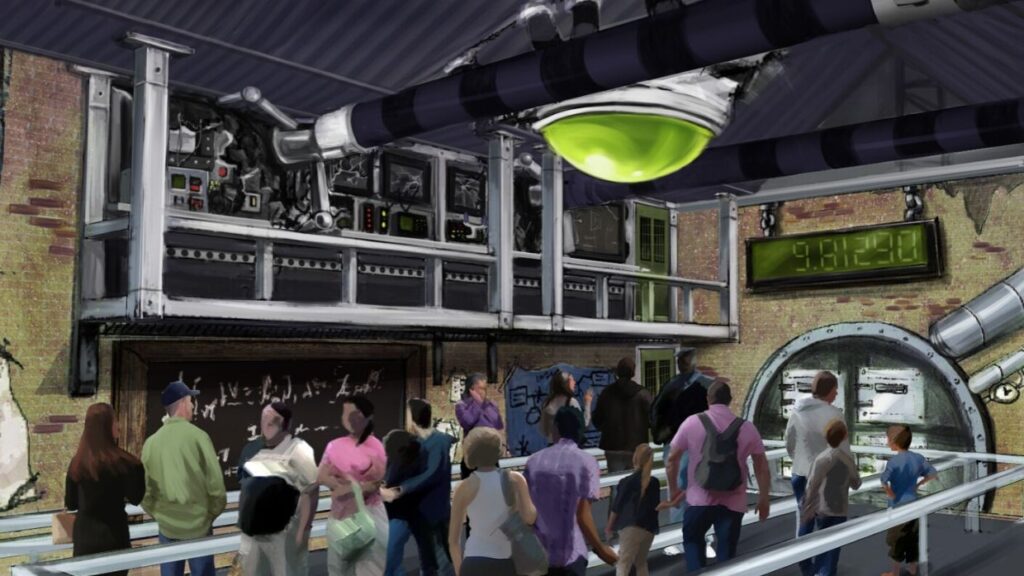
Balancing Immersion and Operations
There’s a danger in making queues too immersive and interactive.
“One thing we never want to do is starve the load,” Emily said, describing an operator’s nightmare of having an empty ride vehicle waiting because guests are held up by overly engaging queue elements.
Great queues find the balance of elements such as animatronics, media, interactives, and scenic storytelling that keep guests entertained but still moving.
The Numbers Behind the Wait
At the core of queue planning is math. The most important metric? THRC: Theoretical Hourly Ride Capacity.
“It’s basically the number of people who can ride the ride in an hour,” Emily explained. “You can think of it as the flow rate. How many people are getting on the ride? How many people are dispatched every dispatch cycle? How many people can do the experience in an hour? That determines your demand.”
From there, designers calculate desired wait times (say, 60 or 75 minutes) and area per guest (5–6 square feet depending on culture). That math shapes everything from the length of the queue to the size of pre-show rooms.
“If you’re releasing 100 people every 30 seconds. But your ride is dispatching 100 people every 20 seconds. There’s 10 seconds that no one can get on the ride, and your load is starved,” Emily explained, “There is a lot of math behind the scenes to get the designs to work out.
The design process is very collaborative:
“The creative team will come to me and say, ‘We’ve written a pre-show that’s two minutes long. How many people do we need to fit in it?’ It’s very much a two-way street.”
Technology and Innovation in Queues
With guest complaints about long waits, parks are experimenting with tech solutions:
- Virtual queues for skipping the line
- Play-based queues, like Dumbo the Flying Elephant at Magic Kingdom, where parents got a pager while kids played in a playground until it was their turn
For the Queue Design Nerds
For anyone interested in learning more about the science behind queues, Emily recommends checking out Defunctland’s documentary on the history of FastPass on YouTube.
“Defunctland essentially made a documentary-length video on the history of FastPass where they talk about queuing logic. And he does a really interesting simulation with a park that he calls Shapeland and explores how express passes impact queues.”
You can watch the full video here.
Final Thoughts
Lines may be one of the biggest guest complaints at a theme park, but they’re also opportunities. Guests are spending more time in queues than anywhere else in the park. Making them memorable is just as important as the ride itself.

